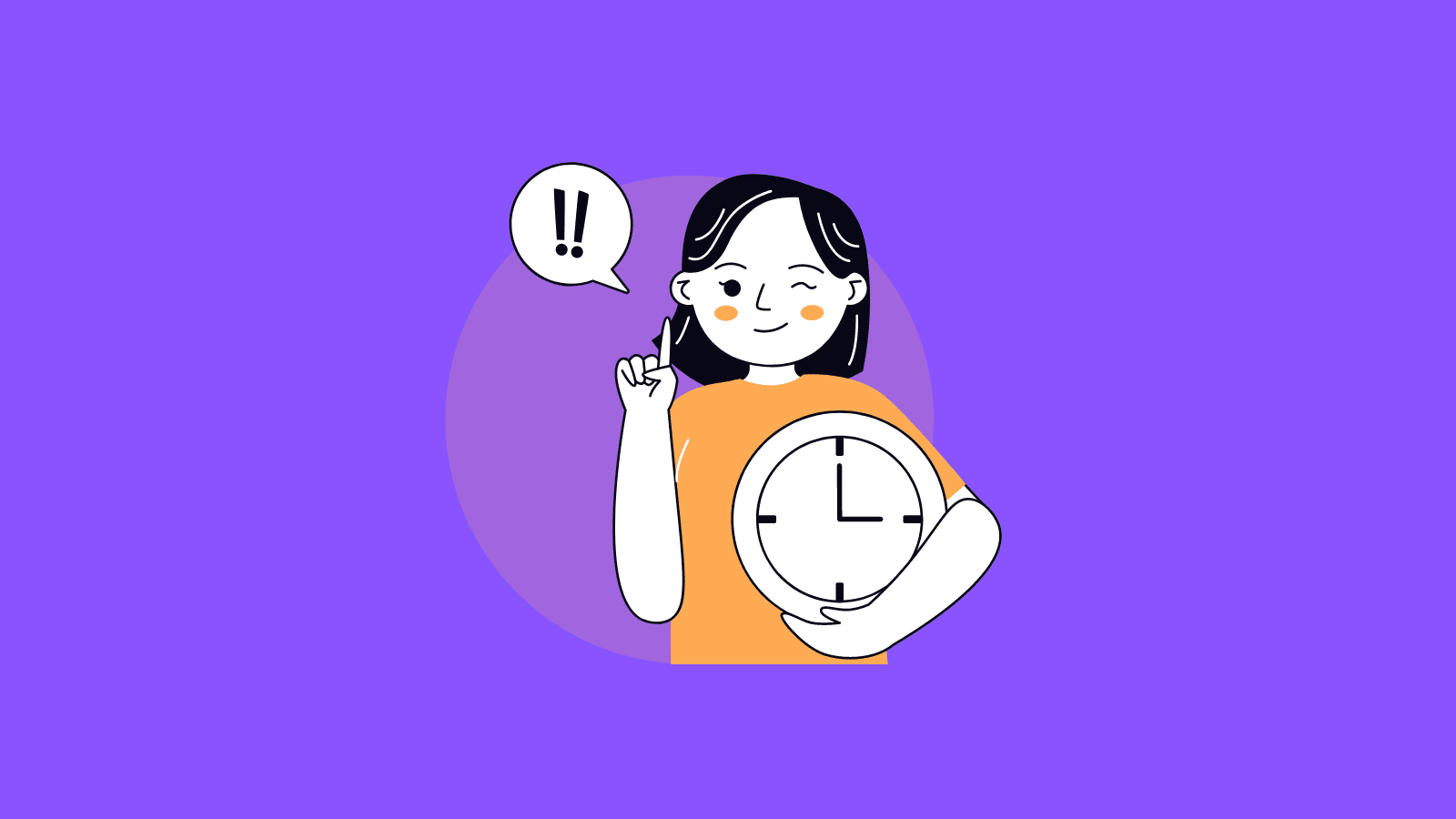Cómo el cambio de contexto arruina tu productividad
Context switching wreaks havoc on productivity, slashing it by up to 40%. In today’s tech-infused work environment, a TechSmith survey reveals that half of the workforce finds meetings, emails, and messages counterproductive.
Beneath this digital chaos lies the stealthy culprit – context switching, where juggling tools and tasks come at a hefty cost.
Principales conclusiones:
Context switching can diminish productivity by 40%.
Mental exhaustion, eroded memory, and scattered focus are its side effects.
There are battle-tested strategies to defy context switching and boost productivity.

"Somos un 20% más rentables porque todo el mundo tiene el hábito de controlar el tiempo". - Richard Wingfield, Geek jefe de Envision Design
What is context switching at work?
Context switching refers to the frequent shifting of focus between various unrelated tasks during a workday.
For example, while working on a presentation slide deck, one may also frequently divert attention to checking emails. This is followed by transitions to tasks such as analyzing weekly sales reports, all while periodically interrupting workflow to respond to instant messages.
The truth is, that what many perceive as multitasking is a phenomenon known as context switching. But what exactly does that mean?
” From a human workforce perspective, context switching is the process of stopping work in one project and picking it back up after performing a different task on a different project. Just like computing systems, human team members often incur overhead when context switching between multiple projects.”
Todd Waits in the Carnegie Mellon Software Engineering Institute blog.

How does a context switch work?
Well, we’ve all been there: in the hustle and bustle of our work life, we often find ourselves juggling many tasks simultaneously.
Whether it’s responding to emails, checking messages, staying updated, or urgently addressing a crucial task for the boss, right now. Our daily routine involves navigating through a sea of responsibilities.
Asynchronous communication, multiple tasks, and the nature of work management can all contribute to the frequency of context-switching within a work environment.
Why do we context switch?
It’s not as if we consciously decide to do it: context switching is often an unconscious, almost trivial, part of our daily routine. This global phenomenon is fueled by the demands of our ever-changing work environment.
In the current work ecosystem, adapting and seamlessly switching between different contexts becomes imperative for staying agile and responsive to the demands of contemporary work environments.

What are the top problems with context switching?
Content switching brings various challenges that affect productivity, mental resilience, and cognitive functions.
Balancing multiple tasks can be challenging, especially when time is scarce, and the consequences of context switching are substantial.
Here are some crazy statistics:
The productivity may suffer a reduction of 40%, according to studies conducted by the American Psychological Association.
97.5% of individuals cannot multitask effectively.
Approximately 45% of people experience decreased productivity during context switching.
- Context switch, aka multitasking, increases stress levels and leads to poor decision-making;
- Interruptions lower your IQ by 15 points — the equivalent of staying up all night;
So, let’s break down in detail some of these issues to understand the nuanced problems linked with context switching.
More insights:
- How Does Stress Affect Productivity?
- Las 10 causas principales del estrés en el trabajo
- Signs of Stress at Work to Watch For
- Best Productivity Podcasts

Reduced productivity
Context switching disrupts the smooth flow of focused work, significantly affecting overall productivity.
As previously mentioned, research in psychology highlights that multitasking, closely related to context switching, can lead to a notable decrease in productivity, potentially reaching up to 40%.
This close relationship between task-switching dynamics and reduced productivity underscores the vital necessity of addressing the broad influence of context-switching on work efficiency.
According to a 2022 Harvard Business Review research report, employees lose around 5 working weeks per year, accounting for 9% of their total work time, due to the need to reorient themselves after switching to a new task.
The statistics are remarkable: On an average day, users switch between different apps and websites nearly 1,200 times, leading to a loss of approximately 4 hours per week due to context switching.
- Lectura recomendada: Cómo lidiar con los compañeros de trabajo perezosos
Mental exhaustion
Frequent task-switching takes a toll on your brain, making you feel extremely tired. Imagine it like running a marathon – if you keep changing tasks, it’s like sprinting and then suddenly stopping, over and over again.
This constant switch depletes your mental energy, leaving you drained. Adapting to new situations or tasks feels overwhelming because your brain needs to gear up for something different.
Scientific studies back this up, showing that each switch between tasks uses up a significant amount of mental energy. It’s like your brain’s fuel is running out faster because of all the changes.
Understanding how these factors work together is crucial. Think of it as recognizing the connection between pushing your brain too hard and feeling mentally exhausted. The more you switch between tasks, the more you drain your mental resources, affecting your overall well-being.

Negative impact on memory and focus
Context switching disrupts this delicate balance, throwing a wrench into short-term memory processes. This disruption not only complicates the retention of crucial information but also poses a challenge to maintaining a deep focus on tasks.
Unraveling the cognitive consequences of this interplay between task-shifting and memory retention provides a profound insight into the intricate cognitive maze navigated by individuals constantly grappling with context switching.
Ways to combat context switching
Don’t be scared. To deal with context switching effectively, you need a thoughtful plan and a proactive approach, and we will help you with that.
Here are 11 simple ways to cut down on context switching and create a more focused work environment:
Identify your context switches
Begin by recognizing the triggers that make you switch between tasks and projects. Whether it’s emails, impromptu meetings, or chat messages, identifying both passive and active switches empowers you to defend against them throughout your workday.
Set your priorities
Streamline your workflow by prioritizing tasks using methodologies like the Eisenhower Matrix. Instead of simultaneously juggling multiple ‘important’ tasks, categorize them based on importance and urgency, ensuring a more structured and focused approach to become more productive and efficient.
Lee:
Use a time-tracking software

One effective strategy to combat context switching is using time-tracking software, such as Timeular.
You gain insights into your work patterns by tracking the time spent on different tasks.
Ineffective time management brings about various psychological effects, including heightened stress, a sense of being overwhelmed, and the feeling of never catching up.
Use it to track time spent on different tasks and gain a clear and objective view of your daily activities. This insight helps you identify context-switching patterns and pinpoint tasks contributing to mental fatigue.
Armed with this knowledge, you can implement targeted strategies to minimize interruptions and optimize your workflow. The real-time visibility provided by a time tracking app acts as your self-awareness companion, enabling you to make informed decisions that enhance your focus, streamline tasks, and ultimately regain control over your productivity.

– Valdemar Alfred, Owner of Valdefar
Más información:
- The Benefits of Time Management for Teams and Individuals
- Why is Time Management Important?
- How to Teach Time Management?
Implement day theming and time-blocking
Structuring the workday with themes and time blocks helps prioritize tasks. This time management technique allows individuals to allocate specific time slots to different types of work, minimizing the need for constant context switching.
- Valuable free resources:
Weekly time blocking template
Work schedule templates
Practicar el trabajo en profundidad
Deep work is the opposite of context switching. It allows you to focus entirely on one thing for a longer period of time, which has plenty of benefits. You not only perform your task faster, but you also do it more diligently.
As you allow yourself to dedicate your entire focus to a single task, and your brain doesn’t need to waste energy on context switching, more resources are spent on problem-solving and creative thinking.
Use “Do Not Disturb” (DND) mode
Tailor the “Do Not Disturb” setting for specific events to eliminate distractions and prevent constant chat interruptions by synchronizing your chat status with your calendar.
This feature lets your colleagues know when you’re engaged in meetings, focused on other tasks, or committed to personal commitments.

Get a Pomodoro app
Install a Pomodoro app or use an online Pomodoro timer for more productivity. This incredible technique involves working in short, focused bursts with breaks in between.
Some Pomodoro apps integrate seamlessly with workflows and provide analytics features to help you identify areas of improvement in your schedule.
Group similar tasks together
Enhance focus and efficiency by grouping similar tasks. Task batching is a productivity strategy in which similar tasks are grouped and tackled during specific time blocks.
Use software integrations
Streamline your workflow by integrating key apps, minimizing the need to switch between tools continually.
This integration enhances task efficiency, allowing you to stay focused on your work without unnecessary disruptions.
Establish no-meeting days
Try to reduce interruptions caused by meeting-related context switching by setting specific “no-meeting days” for your team. This decision provides more focused time on the calendar for task-oriented work.
Limit distractions and embrace deep focus
Create an environment conducive to focused work by minimizing distractions and time wasters. You can also install a focus and concentration app to avoid constant notifications and distractions from other platforms.
By incorporating these strategic measures into your work routine, you can not only recognize and mitigate the challenges of context switching but also foster an environment conducive to sustained focus and productivity.
Conclusión
Mastering context switching is imperative in the quest for productivity and mental well-being.
While juggling multiple tasks is a common challenge, giving in to constant context-switching disrupts focus and heightens stress.
However, by prioritizing key tasks, implementing time-blocking strategies, time-tracking, and minimizing interruptions, you can effectively mitigate the adverse effects of context switching.
Embracing these proactive approaches not only optimizes individual work routines but also contributes to a culture of focused collaboration, benefiting both professionals and the overarching success of teams and organizations in achieving their ultimate goals.
PREGUNTAS FRECUENTES
What is the difference between context switching and multitasking?
Multitasking involves simultaneously handling multiple tasks, while context switching refers to the sequential switching between tasks. Both can cause switching costs, but context switching specifically refers to the mental adjustment and effort required when moving from one task to another.
Does context switch kill productivity?
Yes, definitely. Context switching can significantly reduce productivity. According to the study “The True Cost of Multi-Tasking“, context and task switching can decrease your productivity by 40%.
How can I prioritize tasks effectively to minimize context switching?
Effective task prioritization involves identifying high-priority tasks, grouping similar activities, and allocating specific time blocks to each category.
As we mentioned, the Eisenhower Matrix can help in making informed decisions about task urgency and importance.
What are the cognitive consequences of multitasking?
Multitasking can lead to cognitive overload, decreased performance, and impaired memory.
According to The National Library of Medicine, several scientific studies of multitasking over the past few decades have revealed important principles about the operations, and processing limitations, of our minds and brains.
Can context switch lead to mental exhaustion?
Yes, context switching can lead to mental exhaustion. The constant shifting between different tasks and activities can strain cognitive resources and contribute to feelings of fatigue and overwhelm.
As explained by Sophie Leroy, an Associate Professor of Management at the University of Washington Bothell School of Business: “Attention residue is when thoughts about a task persist and intrude while performing another task.”
How long does it take to regain focus after a context switch?
This phenomenon, known as the “resumption lag,” highlights that after being interrupted, it takes over 20 minutes for individuals to regain the same level of focus and efficiency they had before the interruption. This delay underscores the substantial impact interruptions can have on workflow and overall productivity.
Are there any tools or apps available to help manage context switching?
Yes, several tools and apps can aid in managing context switching. A great way to fight context switching is a time-tracking software, such as Timeular.
Timeular enhances focus and productivity by visually tracking time, prioritizing tasks, and providing real-time insights, reducing the impact of context switching. Try it now for free!